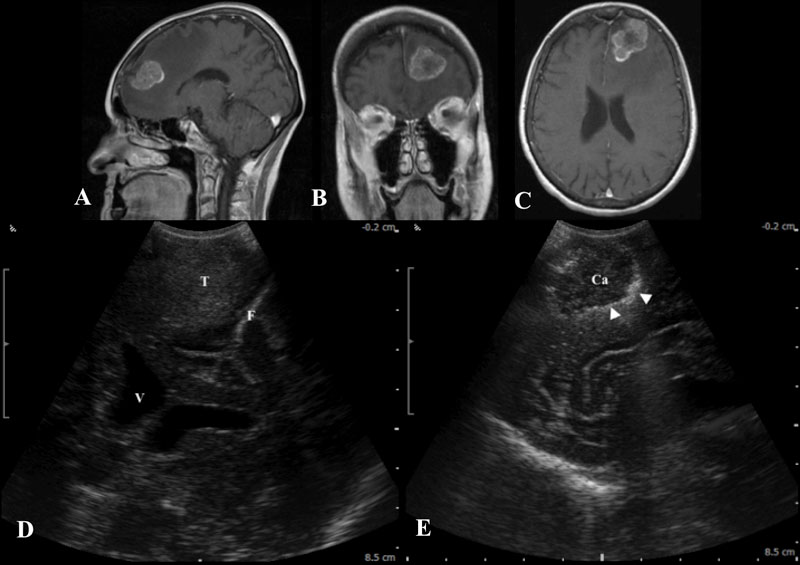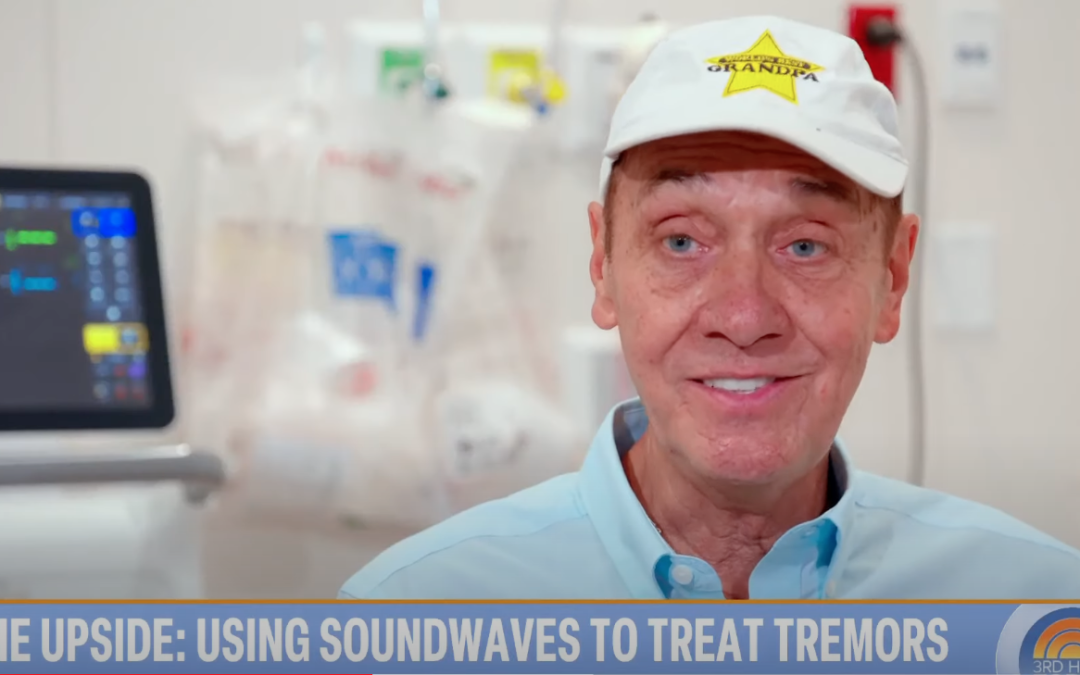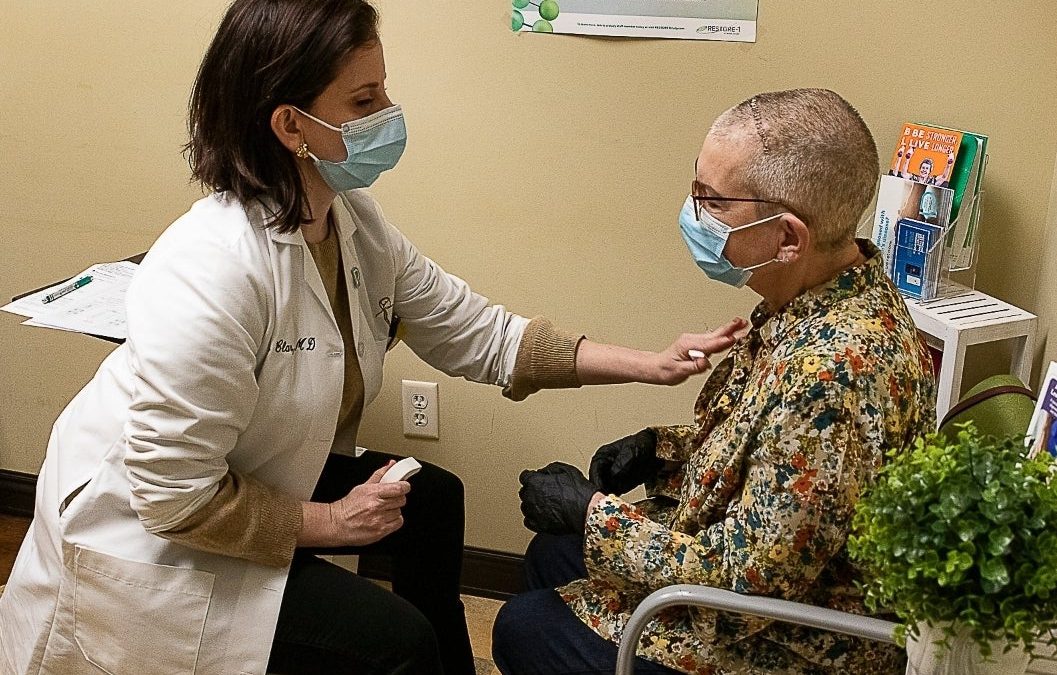Limitations of MR and CT guided navigation are based on the fact that imaging is obtained prior to surgery and does not reflect subtle real time changes in the position of the brain occurring during surgery. This intra-operative distortion of the brain is termed ‘brain shift’ and varies according to the location of the tumor and other factors. Intraoperative ultrasound offers a solution to this problem by providing immediate updated information on the position and location of residual tumor (Figure 1). Ultrasound, however, is not without its limitations in that the quality of the images obtained can be obscured by artifact limiting resolution.

Figure 1
Figure 1: A,B,C: Pre-operative MR demonstrates a large enhancing metastasis in the left frontal lobe. These intra-operative ultrasound images show the tumor before (D) and after (E) resection in coronal and sagittal planes. Note that the post-resection image shows areas that are hyperechoic at the periphery of the tumor cavity (white arrowheads). This artifact sometimes limits the ability to determine if residual tumor exists at the periphery of the resection cavity. (T-Tumor, Ca-Tumor Cavity, V-Ventricle, F-Falx)








